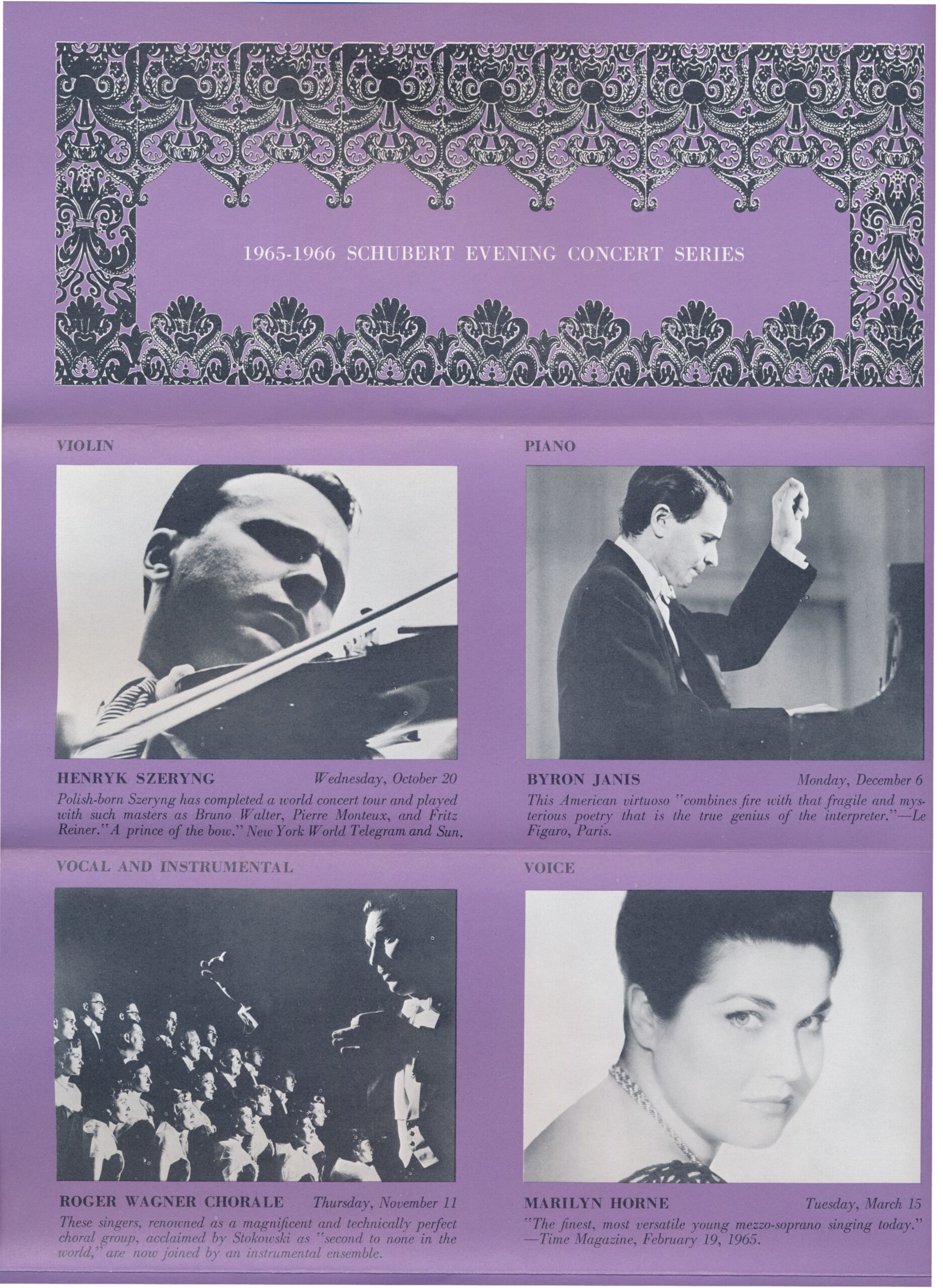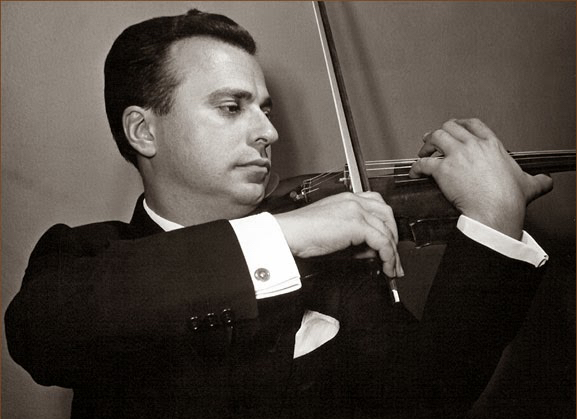Henryk Szeryng
He never commanded the following of a Stern, Oistrakh or Heifetz and appeared in only a single Schubert Club recital, but Henryk Szeryng’s many recordings confirm his status as one of the last century’s outstanding violinists. Born in 1918 into a wealthy family in Warsaw, Szeryng was a prodigy – from 1929 to 1932, he studied in Berlin with the legendary violinist and teacher Carl Flesch, then trained at the Paris Conservatoire with the famous French violinist Jacques Thibaud. He made his solo debut in 1933 with the Warsaw Philharmonic Orchestra playing the Brahms Violin Concerto which, much later, he would record no fewer than three times. It is probably the single work that best displays his pure classical style, rich, warm tone and imposing technical facility: his glowing 1959 recording with Pierre Monteux conducting the London Symphony Orchestra is arguably unsurpassed, by him or any of his rivals. Here he can be seen and heard giving an incandescent performance of the Brahms at a 1962 Paris concert, partnered by the distinguished French conductor Paul Paray, then music director of the Detroit Symphony:
Szeryng’s burgeoning career was interrupted by World War II, during which he served as an interpreter for the Polish government in exile (he was fluent in seven languages) and gave concerts for Allied troops all over the world. On one of those occasions, he was offered a university teaching position in Mexico, where a few years earlier he had escorted and found asylum for 4000 Polish exiles. He came to love that country and settled there and took its citizenship. His international career began in earnest in 1954 after he met Arthur Rubinstein, another Jewish refugee from Poland, who was giving a concert in Mexico City. He visited Rubinstein backstage and was invited to play for the great pianist at his hotel. His solo Bach, said Rubinstein, “reduced me to tears”. They became regular recital partners, and Bach is still the composer with whom Szeryng is most closely associated. He made two authoritative recordings of the complete Solo Sonatas and Partitas – in mono in the mid-50s and in stereo in the mid-60s. In this 1964 French TV broadcast, he plays the Fugue from the Sonata No. 1 in G minor – which featured in his Schubert Club recital program the following year:
Szeryng was equally at home in virtuosic showpieces:
Another of his finest recordings was of Bartók’s Second Concerto, recorded with the Concertgebouw Orchestra under Haitink. Here he is playing Bartók’s Romanian Folk Dances in Paris in 1962:
From the Schubert Club Archive:

Poster for the 1965-66 season of the International Artist Series
Click to View Full Image

